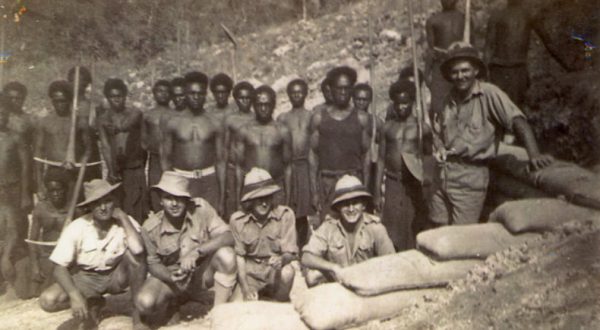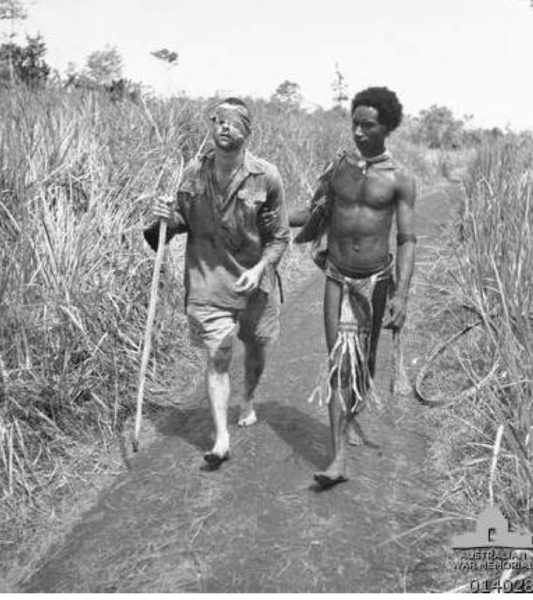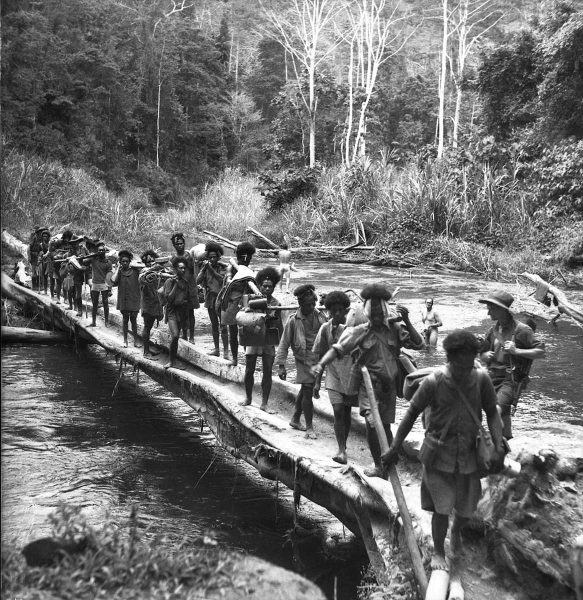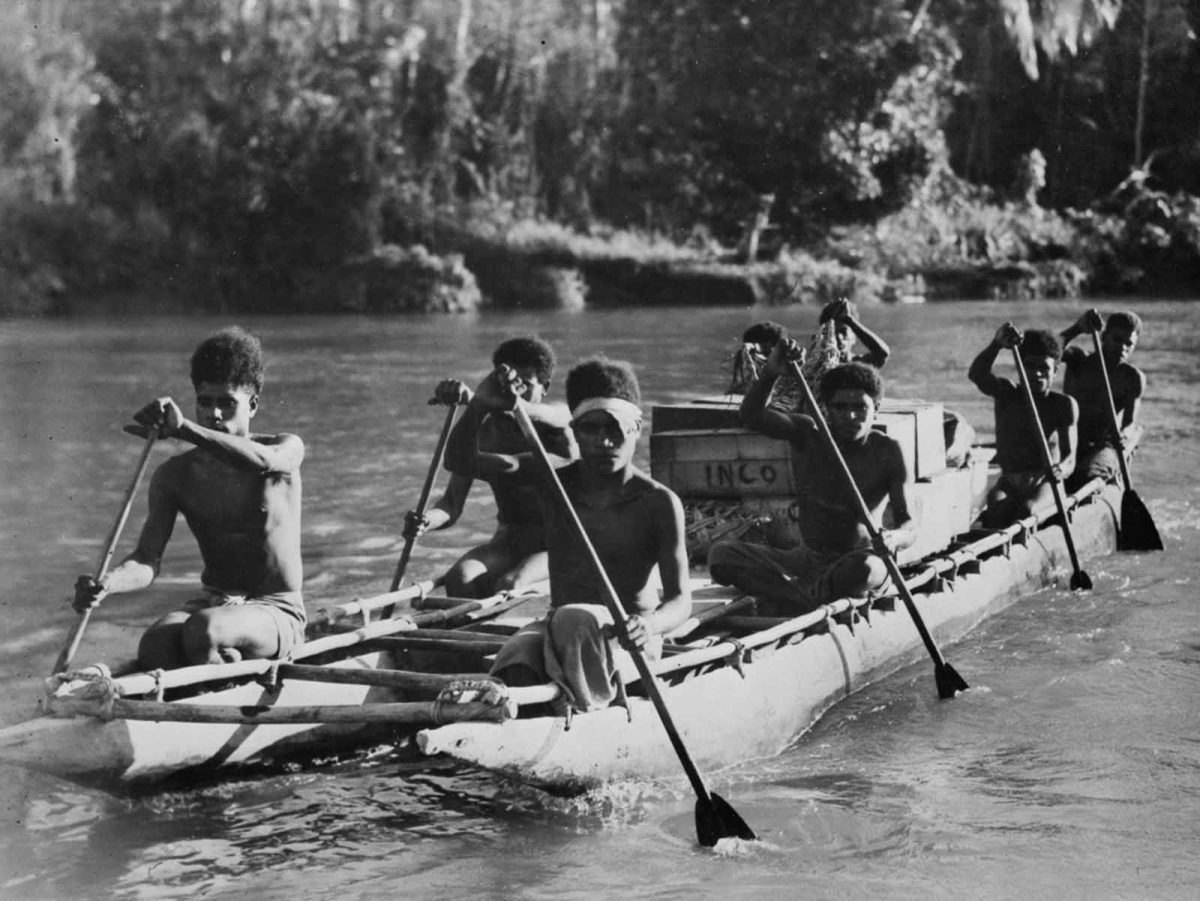[Disclaimer: We have taken the utmost care in discussing this topic, due to its current-day significance and contentious topics, so as to not cause any offense. Despite this, the topic at hand remains very volatile, and may have some points or names that may be considered somewhat contentious in the current day, but are being used in a historical context; in no way do we intend disrespect or hatred towards any person or group. Neither the Shield nor the author wish to show any malice or hatred towards anyone and feel for those affected by the occurrences mentioned in this article.]
[Ed. Note—We would like to point out that, in case there is any remaining doubt as to Mr. Hay’s excellent character, he wrote the above disclaimer, which we endorse wholeheartedly, by himself and without us requesting it.]
It was not just Australians that fought on the Track, but also the Papuan native peoples. In fact, at this point, you may be asking why we are fighting on Papua in the first place, so a bit of info.
At the time of WW1, the area was split, with the southern part of modern-day Papua New Guinea under British control and the north under the control of Germany. At the outbreak of war, and after a quick excursion by a group of Australians, the German colony capitulated and was put under British Imperial control. After the war, the area was assimilated into the colony of Papua New Guinea, put under the administration of Australia. This was definitely not great for the native Papuans, as this lead to years of mistreatment, including limited civil rights and having to work in horrible conditions on rubber plantations. Life under the Australian colonial administration was horrendous—the things mentioned previously are just the tip of the iceberg, but for the sake of brevity, just be aware that it was very bad stuff, even by standards of the time.
Despite all this, when the time of the Track came around, the people here helped the Australians fight off the Japanese.
Now, I must preface this by saying that not all of these people joined the war effort willingly; a good amount were forced, and others at least coerced, but a fair number of Papuans did fight with Australians out of their own kindness and care, as well as understandable fear of the Japanese, due to how they treated the indigenous people of other places—although this may have been more due to Allied propagandization of said Japanese treatment.
They aided the Australians in a few ways, the first of which was as spotters. This was especially common along the coast; native people were told to watch the coasts and report to a station or designated location to alert if an invasion or disturbance was seen. This service, while not as large or strenuous as the others, was huge. Native spotters were the first reason the landing at Buna was even found out, due to them reporting to a radio station and then radioing to Port Moresby. This single action allowed the 39th to get to Kokoda and engage the enemy, which was possibly the reason that the Australians were able to hold out and defend with extra time.
The second way was as direct combatants. These were probably (and unsurprisingly) the most conscripted of the services. There were two battalions made of Papuans during the war: the New Guinea Infantry Battalion (NGIB) and the Papuan Infantry Battalion (PIB), which fought on the Track. These forces were very useful to the war effort, but faced many challenges, most notably including a lack of equipment. If you thought the Australians’ equipment was bad, then you would not believe how much worse these guys had it. Their equipment was the oldest and most obsolete in the Allied arsenal, if they even got any at all. Another issue was desertion; due to the battalions being mostly conscripts, there are many accounts of the members running away at the sight of combat.

This, however, should not discount the heroics of those that did fight and die with the PIB throughout the campaign, sustaining a confirmed 15 deaths and 35 wounded, with many more missing, and all this in a force only 300 strong. The PIB received many awards, including one Distinguished Service Order. Other than this, ambush operations behind enemy lines by native Papuans caused many disruptions and casualties in the Japanese ranks.

The third way that they helped, and one of the most famous, was through medical assistance and caring for the dead and wounded. These were the men and women known as the “Fuzzy Wuzzy Angels,” due to their arm and leg hair being a lot more prominent than in most of the Australians, and their selflessness. These Papuans cared for the wounded and carried them on stretchers over mountainous and jungle terrain, back to aid stations that could be tens of kilometers away. During this trek, they would actively care for the wounded, applying whatever medical aid they had while feeding, caring for, and giving water to the soldiers. They fully earned their name; there are accounts of them defending their charges against wildlife, sleeping right beside wounded men and helping them in the middle of the night for even the slightest worry. If not for them, the casualties would have been much worse for the Australians, as they would have been completely isolated from all aid stations and the so-called “salvos” (Salvation Army stations, meant to help with medical aid, due to the lack of field hospital supplies). Their selflessness—despite the treatment they had endured under Australian administration—was a true miracle; their care for human life was absolute. They cannot be credited enough as the reason why casualties were so small, as without them, deaths and injuries could have easily doubled if not tripled.
Unfortunately, this was also one of the worst duties for the Papuans to fulfill; some reports say that groups of native Papuans were “seized” in order to do the work, which really displays how badly they were treated. There was a constant background of colonial mistreatment and racism that saw Papuans treated as inferior people under ANGAU, the colonial administration of the area, which was usually responsible for the manipulation and all-but-enslavement of the native peoples at the time.
The last way that the Papuans helped aid on the Track was as relay carriers for supplies, which they would walk from outpost to outpost until the supplies made it the whole way down the Track. This was grueling work that required them to walk up and down steep terrain and over rivers faster than any Australian man could have ever dreamed. In military terms, this was likely the most influential aid, as this service was done by thousands on terrain impenetrable by military vehicles, limiting the Allies to either on-foot or air transportation. The latter method, however, was also blocked for most of the campaign, due to Japanese air superiority. The Papuans’ ability to get supplies to necessary locations facilitated the entire campaign, making all of the movements, battles, and ambushes available in the first place. Now, it is important to say that this, like the PIB, was very conscription-heavy. Many Papuans were forced into becoming carriers; many even died or suffered grievous harm, due to the constant work with very limited rest. 
The sacrifices made by the men and women of the area were great, but were also a major reason for the success of the campaign. If it were not for the carriers, the Australians would have been cut off from supplies; if it were not for the Angels, the Australians would have taken many more deaths rather than wounds; and if it were not for the spotters and soldiers, the Australians would have had to fight alone. Despite how they were treated by the colonial administration, their determination and care led directly to their victory in the campaign all the way through the Track. Today, this contribution has been recognized to some extent, but is still sadly somewhat thrown by the side—so if you find this at all interesting, please look into it and read more as the heroics of these men and women, are truly incredible.
Thank you all for reading. The next article will be on the first battle of Kokoda and the real starting point of the campaign. After that we will get on with the rest of the track and focus on some of the other major battles.
Further Reading
